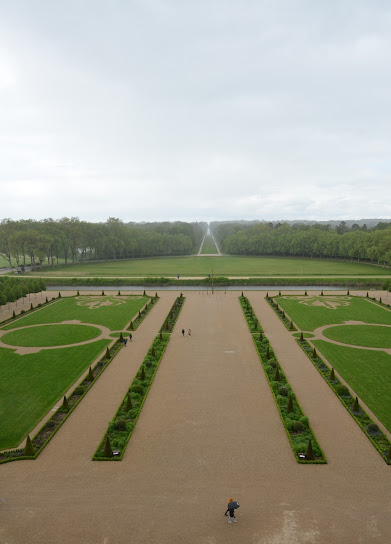Tuesday, July 11, 2023
Introducing Donna Wichelman
Tuesday, July 4, 2023
How a Sixteenth-Century French Château Became a Repository for French Art During World War Two
By Donna Wichelman
Over the last months, we’ve talked about King Louis XIV of France—the Palace of Versailles, his excesses, and the divine rights of the king. Yet these characteristics of the monarchy were not exclusive to Louis XIV, nor was the Palace of Versailles the only extravagant royal residence. More than forty thousand castles exist throughout France, some of which have appeared in this blog. The oldest, Château de Thil, began construction in 850 A.D. The youngest, Château Louis XIV, was completed in 2011.
Today, we frown at such overindulgences as wasteful. But some of the world’s most spectacular artwork and architecture exists because kings, queens, and aristocracy commissioned them. What would Leonardo Da Vinci and Michaelangelo have done without their patrons? Millions of us flock yearly to ogle these feats of architecture and museums filled with acclaimed artwork spanning millennia across the globe.
We also admire and applaud the Monuments Men—those men and women who, at the close of World War II, sacrificed their families and careers for a time to recover the lost artwork of Europe after the Nazis absconded with them. Long-time readers of this blog remember Johnnie Alexender’s 2022 series on lost and stolen art.
But do you know that even before the Nazis occupied France, an effort was underway to preserve some of France’s most priceless possessions? Deep in the Loire Valley, another royal château became the hiding place for these treasures from The Louvre and other Paris museums, including the Mona Lisa.
Architectural experts view Château de Chambord as one of the
world’s marvels of engineering. Commissioned by François I in 1519 at the height of the Renaissance, this
uniquely designed château
was meant to glorify François
and impress the world. Debate
continues around who fashioned the magnificent edifice. But most agree it was a
collaboration of Italian and French master artists, architects, and masons,
including Da Vinci himself.
François never meant for the château to be a permanent residence and only lived there for a few weeks. Eighty years after his death, parts of the château fell into disrepair. King Louis XXXIII gave it to his brother Gaston d’Orleans, who instigated restoration work to stave off complete ruin.
Finally, characteristic of King Louis XIV, whose predisposition was to do everything in the most ostentatious manner, restored the great keep, furnished the royal apartments, and developed the extensive gardens. He also added a 1,200-horse stable, using the château as a hunting lodge and a place to give grand parties. Louis also invited Moliere to perform his premiere of Le Bourgeois Gentihomme at Château de Chambord.
Having observed the events occurring across Europe in the mid-1930s, the French feared German attacks and the loss of their most prized pieces. Paris museums organized an evacuation plan. On August 28, 1939, a convoy of trucks set out with 5,446 cases to deliver to the Chambord.
When France declared war, the public could no longer visit the château. But curators and custodians guarded the cache, ensuring its safety and preventing damage from insects and dampness. Though an American bomber plane crashed into the château, causing a fire, not one piece of art perished. After the war, the artwork was returned to the museums from which they were rescued in Paris, and the château was later renovated.
By 1981, Château de Chambord became listed as a UNESCO World Heritage site. Today, Château de Chambord is open to the public and receives nearly two million visitors per year. Discover more about the Château de Chambord.
Donna worked as a communications professional before turning to full-time writing. Her short stories, essays, and articles have appeared in various inspirational publications, and she has two indie-published Christian contemporary suspense novels in her Waldensian Series, Light Out of Darkness and Undaunted Valor. .

 Weaving history and faith into stories of intrigue and redemption grew out of her love of history and English literature as a young adult while attending the United World College of the Atlantic--an international college in Wales, U.K. She loves to explore peoples and cultures of the world and enjoys developing plots that show how God's love abounds even in the profoundly difficult circumstances of our lives. Her stories reflect the hunger in all of us for love, forgiveness, and redemption in a world that often withholds second chances.
Weaving history and faith into stories of intrigue and redemption grew out of her love of history and English literature as a young adult while attending the United World College of the Atlantic--an international college in Wales, U.K. She loves to explore peoples and cultures of the world and enjoys developing plots that show how God's love abounds even in the profoundly difficult circumstances of our lives. Her stories reflect the hunger in all of us for love, forgiveness, and redemption in a world that often withholds second chances.
You can find out more about Donna at www.donnawichelman.com.















